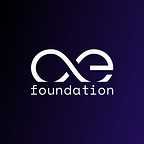How Will Blockchain Technology Enter the Mainstream? | Writers Contest Winner #1
We are sharing the first piece written by a community member for the Writers Contest organized in February 2019. The following article is by our friend abedwo.
The Blockchain Genie is Out of the Bottle
The race to bring blockchain technology to the mainstream has begun. We, the early adopters — and whoever is reading this article, could be considered one — need to think about how this technology can be adopted for use by a mainstream audience. It is important not only because it could create opportunities for many, but because it can provide a solution to one of the greatest issues that we are currently facing on the internet:
that we are producing an enormous amount of data and that data is aggregated in the hands of a number of centralized entities which are accumulating an extraordinary amount of power.
Public, open-source, permissionless blockchain technology can remedy this problem by decentralizing the control of data and moving it back to the hands of users. They are the true owners of these networks and, by extension, the data stored on them.
Who Cares About Decentralization?
Sadly, the decentralized ethos in itself is not appealing enough to the mainstream.
Users care more about utility and ease of use. The user experience of decentralized apps must improve dramatically.
The way blockchain technology will enter the mainstream is by providing an alternative to currently existing centralized apps.
Since we are at a very early stage of adoption and major protocol upgrades are difficult to introduce in public blockchain networks, the frameworks that are being established today will most probably be used for years and decades to come. Therefore, it is especially important that the infrastructure being developed today is solid and well-thought-out.
Currently, using public blockchains is mainly an exercise for developers (and not that many of them at that). They are generally slow in industry terms, poorly optimized, provide a lackluster user experience, and not scalable enough to handle millions or billions of users. Smart contracts are neither “smart” or “contracts” and are not secure enough for serious applications that manage millions/billions in monetary value. Their reliability and speed are not high and scalable enough.
Next-Gen Technology — Mainstream Ready
By utilizing state channels on the æternity blockchain, it is possible to execute transactions and smart contracts off-chain with the same security guarantees that the main chain enables, but in real-time and for free.
State channels scale through unlimited off-chain parallelism.
This allows for a significantly smaller number of transactions and programs (smart contracts) to be stored on-chain. Furthermore, æternity’s state channels are protocol-integrated. They are not enabled on Layer 2 (with a program running on the main chain). This makes their management and execution much more efficient than [all] currently existing solutions. No need to use third-party tokens — the cryptocurrency you need is AE.
This efficiency has important user-experience implications.
Once the Python SDK is upgraded to manage state channels (currently highest priority task) it will be easy for app developers to incorporate them in decentralized apps. æternity’s apps (AKA æpps) form a core part of the ecosystem and are an important consideration during every stage of development. The mobile-first approach paired with extensive documentation, tutorials and solid SDKs will provide a strong foundation upon which the community can build a thriving ecosystem of next-generation æpps.
On-Chain Governance
Without decentralization and a governance system, a blockchain platform isn’t more than an inefficient SQL database.
æternity incorporates the BitcoinNG consensus mechanism developed by researchers from Cornell University and uses the Cuckoo Cycle Proof-of-Work mining algorithm for Sybil attacks protection. In addition, a liquid democracy governance mechanism is being developed to allow anyone with a stake in the æternity network (AE token users) to formally provide an opinion on its future.
æternity’s governance æpp is currently being developed and should become available (and put to use) in the next two months.
Conclusion
Just like a person performs a Google search and has limited knowledge of the technological rumblings going on in the background, blockchain technology must integrate seamlessly into the everyday lives of people. All the technical hocus-pocus must be nicely tucked away. The benefits of the technology, however, must be tangible to as many people as possible. That can only be achieved through an efficient public blockchain infrastructure, useful documentation and tutorials, and user-friendly applications solving real problems.
This is exactly what the value proposition of æternity blockchain is.
Do you want to know why æternity’s state channels solution is the most advanced one in the industry? Join the Telegram AMA with Dimitar Ivanov next week to find out!
